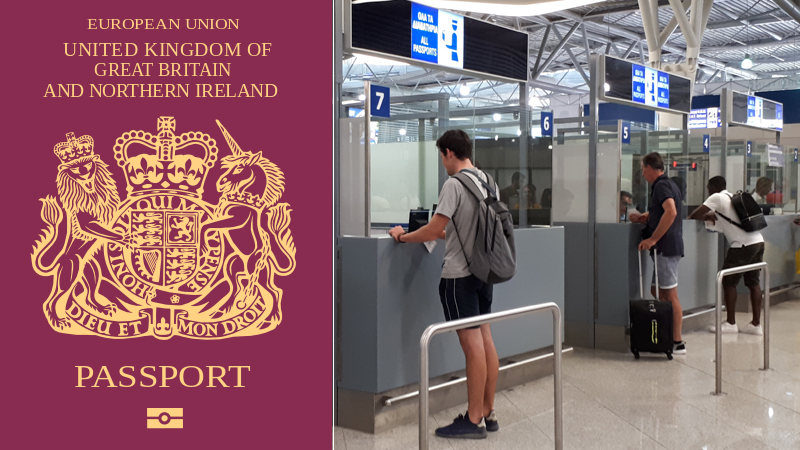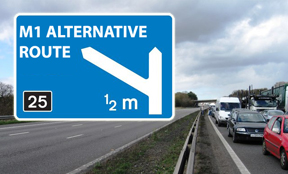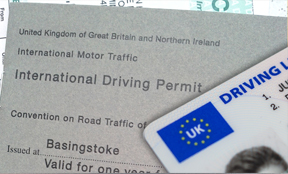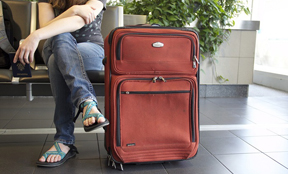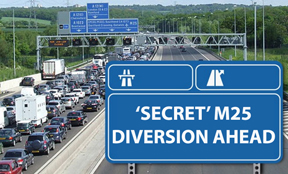
With the overseas conflicts seeing petrol and diesel prices jump to record highs, many people are finding it tough to afford fuel amid the burgeoning cost of living crisis that is gripping the UK. Here motoring journalist and expert Pete Barden looks at how drivers can save fuel and cut costs while driving.
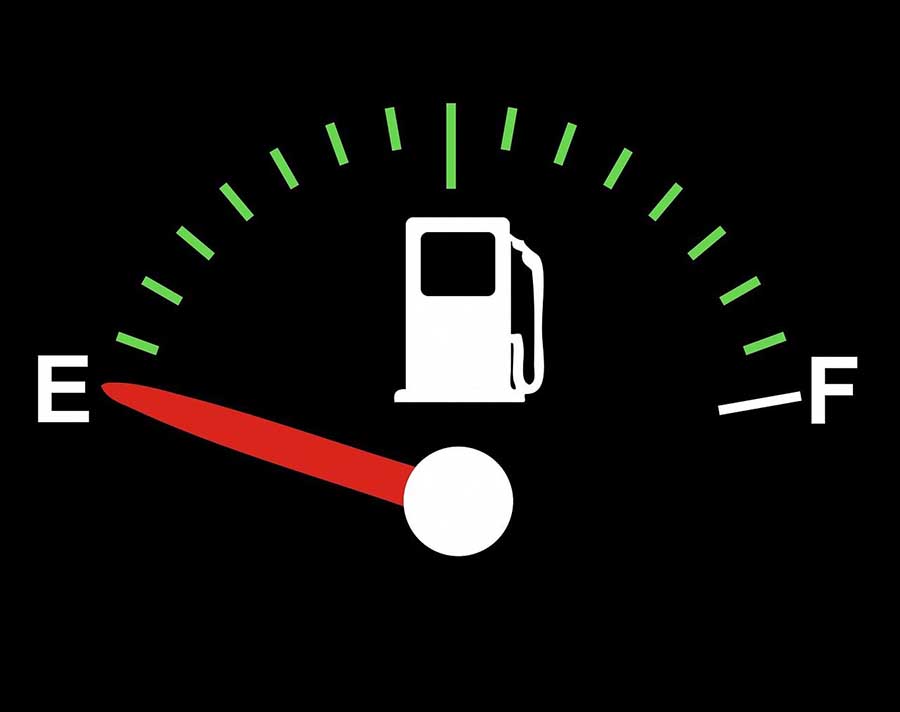 How can we save fuel
while driving? Here are some tips (Credit: Pixabay)
How can we save fuel
while driving? Here are some tips (Credit: Pixabay)
1. Check tyre pressure for better fuel economy
First place to head is tyres. Having under-inflated tyres on a car will have a hugely negative impact on fuel economy. Tyres will lose around 2psi over a month, so not checking your tyres for two or three months could see your tyres under-inflated by up to 40 per cent – seeing fuel consumption jump by up to eight per cent, according to research by the US National Highway Traffic Safety Administration. These figures will apply equally in the UK, so get to the garage and ensure you have the correct tyre inflation to start the quest to cut your fuel consumption.
You should also check the age of your tyres, as old rubber can become brittle and allow air to leak out more easily - resulting in increased fuel use. Old tyres can also be dangerous - and illegal if older than 10 years on some vehicles, so check the age of your tyres here now.
ACTION: Check your correct tyre pressure using this tool, then adjust to start saving fuel. Check every week to ensure you’re not wasting fuel.
2. Drive in a higher gear where possible to use less petrol or diesel
Accelerating aggressively and driving in lower gears is a sure-fire way to drain the fuel tank faster than necessary. Ease the petrol or diesel consumption by accelerating slowly and changing gear as soon as possible – try to do this at no more than 2,000rpm if safe to do so. Many people use the figure of 52mph to be the most efficient speed for a car, but variations in traffic conditions and type of road make this ‘average’ figure unrealistic. Research does suggest that many cars are at their most efficient when travelling in a high gear at 45-50mph where possible and legal. Remember, the higher the rpm the more fuel you are using – so keep in a higher gear when you can.
ACTION: Accelerate less aggressively and change up earlier than you normally would if safe to do so.
3. Anticipate traffic ahead to cut braking and acceleration
As we’ve previously said, accelerating uses up more petrol and diesel than when cruising at a steady speed. So, keeping an eye on traffic ahead can help slash the amount of fuel you’ll use on all types of trips. Look ahead and anticipate what is likely to happen – such as if the traffic light is red in the distance, start slowing to time your arrival for when they switch to green. You can also plan your trip by taking alternative routes that have fewer pinch-points that could cause stop-start traffic. Remember, driving at a smooth constant speed will cut fuel consumption.
ACTION: Always keep an eye on traffic ahead – or plot an alternative route on quieter roads where you can maintain a more constant speed.
4. Coast to slow down and use less fuel to accelerate again
While this applies to the section above as well, anticipating the road ahead can also help you avoid heavy breaking, which will help avoid fuel slurping acceleration. Braking will waste the forward momentum built up while under power. If coasting to slow down, the vehicle will not scrub off the forward momentum as quickly as braking in many cases – keeping it in the bank should the road become clear ahead. Adopting driving techniques such as this, combined with others mentioned on this page, could slash consumption by up to 25%. You will also be pumping out fewer harmful emissions.
ACTION: Again, keep your eyes on the road ahead and don’t use the brakes when all you really need to do is lift your right foot and coast to lose speed. Only use this technique when safe to do so.
Subscribe for free motoring and travel news here - support independent journalism
5. Switch the engine off in traffic jams make your petrol and diesel go further
Did you know that a 1.5-litre engine could use about 300ml (one mug’s worth) of fuel when it is left to idle for 20 minutes? Over a daily commute into a city, this could waste large amounts of expensive fuel. As soon as you are stopped for more than 30 seconds, switch off the engine while you wait for the congestion to clear. If your car has a stop/go feature, make sure your battery is in good order or it may be switched-off by the car’s brain – leaving you paying for more fuel. You can also use online route finders to avoid big jams on the likes of motorways such as the M25.
ACTION: Don’t just sit there fuming in jams – switch the engine off as soon as possible, if safe to do so. Again, along with saving fuel, you’ll also be cutting emissions.
6. Turn the heater down - as this uses fuel too!
Using air-conditioning will see fuel consumption jump, but it’s not just cooling the car that puts extra strain on the fuel tank. While cooling the car with air con will use a lot more fuel, there are savings to be made from cutting down on the amount of hot air blasting into the cabin. The heat is recycled from the engine, so that’s not a problem, but the fans delivering the warm blast will require more fuel to be used to create the electricity. This might not save a huge amount of fuel, but turning the blower down a notch or two, will certainly cut your costs.
ACTION: Turn the heater down a little, or pull on a jumper as you start your journey.
7. Cut the weight you’re carrying to improve fuel economy
Cars are just like humans – the more weight they are carrying; the more energy they need to move. Take a look around your car and see what you can take out of the boot or backseat – or payload area if driving a van. Remember, fuel consumption of a small family car increases by about 1% for every 25 kilograms of weight it has to carry.
ACTION: Clear out your boot and backseat areas to slim down your car’s weight – and help to boost your consumption right away.
8. Clean and wax your car as less resistance saves petrol and diesel over time
Can a dirty car really increase wind resistance and therefore cut your MPG? A test by Discovery Channel show Mythbusters tested out this theory, and found out that a clean and waxed car averaged 2mpg more than a dirty car.
ACTION: Get outside now to clean and wax your motor – taking it to the local car wash will just be a waste of fuel – unless it’s on your route, of course.
9. Look for electric car alternatives to save fuel
Even though energy prices are still going up, the cost of running an electric car, on power alone, will still be cheaper than buying petrol or diesel at the pumps - especially if you have a home charging point. You don't need a special licence to drive an electric car - and automatic licences are okay too - so why not see what is on offer? You can start with the likes of a 2011 Nissan Leaf for around £5-6,000 - and make good savings over by plugging in to a private charger at your home. Using a public network, however, could see you paying the same, or even more than, as a conventionally powered car owner.
10. Fuel additives to improve fuel economy?
There are various products on the market that claim to improve performance and boost fuel economy, but do they work? Research has shown that while they do add benefits, this may not be significant. Users are likely to find better results in older vehicles - where engine components are likely to benefit from cleaning - compared with newer, cleaner and better-maintained vehicles. The additives are likely to cost around £4 so would negate any savings in the short term - but of course could reap rewards over time with reduced maintenance costs.
11. What about hypermiling? What is it?
Hypermiling is where a driver attempts to squeeze every last drop of economy out of their fuel tank. A person committed to hypermiling will start by asking ‘do I even need to drive?’. A five-mile drive, for example, is just a walk or bike ride perhaps – and that’s exactly what they will do.
If a ride or walk is not possible, the hypermiler will plot a route that is as direct as possible, but also comes with the risk of less acceleration and braking, which both suck more fuel from the tank.
They will also swap the time of their car journey to periods with fewer cars on the road. If commuting, they will leave several hours early or late to avoid the busiest – and most fuel-hungry – times on the road.
The car will also be optimised for hypermiling, with the tyres checked and inflated to the perfect pressure before every trip – to ensure the least resistance when rolling. The car will also be stripped of excess weight, and the likes of roof rack and boxes removed.
The car will also be up to date with its servicing schedule, to ensure all aspects of its mechanical and digital systems are running at peak efficiency.
Parking position also plays a part in the life of a hypermiler. In cold weather the driver will park the car facing the morning sun, to ensure that it melts frost on the screen and cuts the amount of power – and fuel – to melt the ice. In hot weather, the car will be parked in shade to keep it cool and reduce the need for air-conditioning to work so hard – and use more fuel.
Some drivers will park in spaces that don’t need extra movement to get in and out of – such as driving through parking spaces, so they just drive out without the need to reverse. Or even park on hills to reduce the acceleration required to drive off.
12. Use these tips to help offset the cost of red diesel being banned
With cheap red diesel being banned from April 2022 for many users across the UK, the increase in fuel prices will hit users particularly hard as they have to pay the full price for previously discounted diesel. Use the tips described on this page to help cut your bills.
Most read motoring content
Take a look at more of our top motoring-related content here...
-
How much is road tax going up on 1 April 2022?
-
What happens to a car when the owner dies?
-
Will I get a speeding ticket after being flashed
-
Do I need to wear a mask in my car under Plan B restrictions?
-
Are driving tests being cancelled due to Covid?
-
Do I need to tell the DVLA about having Covid-19?
-
Can I be fined if the car park ticket machine is not working?
-
Is the M6 Toll Road free on Christmas Day?
-
How much is the Tamar Bridge toll and when do I need to pay it?
-
Do I need an electric car licence and driving test in the UK?
-
How can I find out who owns a car
-
Will I get a 6-month MOT extension because of the new Omicron variant this Christmas?
-
Do I need an international driving permit for France and Spain
-
How to spot a fake undercover police car
-
Is my green paper driving licence still valid and how much to swap for a photocard?
-
Can I drive in sliders in the UK - with or without socks
-
Electric car charging points at UK airports for public use - 2021
-
Are electric scooters a good Christmas present - find out the driving rules here
-
Are my sunglasses legal for driving?
-
Secret parking offences you're committing revealed
-
How old are my tyres - find out instantly here
-
What are the black dots on my windscreen for?
-
How far and how fast can I drive on a space saver spare wheel
Author: Pete Barden:
Twitter: @pete_barden
Pete Barden is a qualified journalist who has written and produced for publications including The Sun (thesun.co.uk), New Statesman Media Group, Whatcar? (Whatcar.com) Stuff Magazine (Stuff.tv), Fastcar Magazine (Fastcar.co.uk), Maxim Magazine and UK broadcast stations within the Heart network (Formerly GCAP). Pete specialises in motoring and travel content, along with news and production roles. You can find out more about Pete Barden on LinkedIn.
Read all articles by Pete Barden






